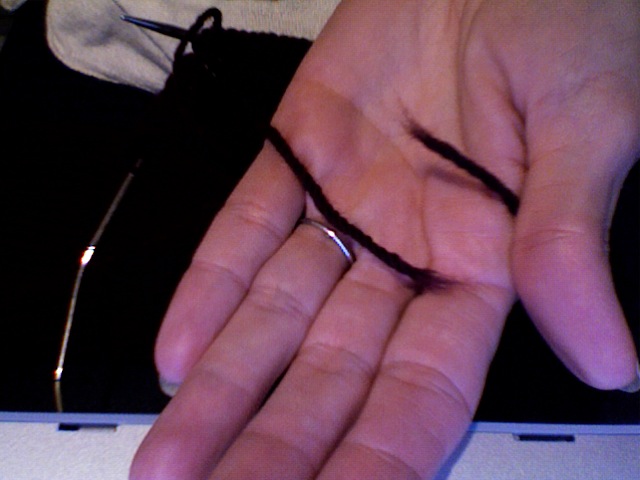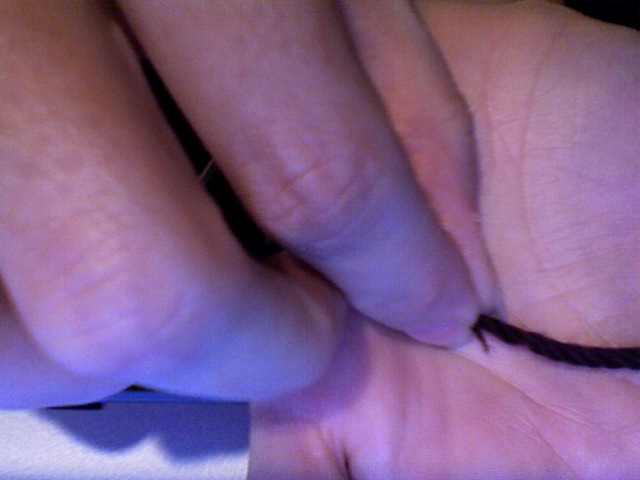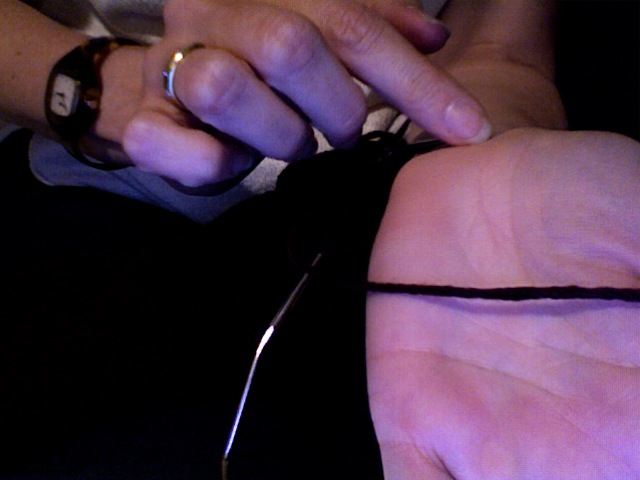Unless all of your projects use one skein, you will — eventually — have to join a new ball of yarn. Here are some tips.
1. When possible, only join yarn at the beginning of a new row
Leave a long tail of the old yarn. Start knitting with the new ball (also leaving a long tail). If the yarn is particular slippery, you can loosely knot the two tails together. This is temporary, until finishing. Yes, the new stitches will seem a bit loose for a few rows. That’s okay. When you are doing your finishing, weave each of the ends into the seam (if there is one) or into a few side stitches if there is no seam (e.g. a scarf). If the yarn is slippery or likely to work itself out (which is often the case in some of the more novelty type yarns), tack down the end after weaving it in using a sewing needle and matching thread.
The reason for not joining yarn in the middle of a row is that the weaving in is often noticeable, especially with bulky yarns, unless you are extremely careful. If you are not sure if you’ll make it to the end of the next row, check whether the yarn you have left in the old ball can go back and forth across the next row four times. (Some people say three, but I’ve been burned so I say four.) If it can, you can most likely finish the row. If not, stop before you start.
2. Felted or Spit Splice
You can avoid weaving in ends almost completely with a felted splice, more commonly known as a spit splice. So, here is my method. Note: This method works best with 100% wool yarn. It does not work with washable wools (which won’t felt), cotton, linen, etc. It does work with silk/wool blends and many other yarns. I always test whether or not this method works before I start knitting. (Forgive the funky photos; I am taking them with my built-in web cam.)
Here are two “ends” — one from the piece I am knitting, where I am running out of yarn, and the other from the new ball.

After making sure that an inch or two of each end is slightly unraveled, I moisten the end of each. I stick it in my mouth — hence the name spit splice. You can also dip each end in water. Once each end is moistened, you overlap them and twist them together slightly with your fingers.

Then you lay the overlapped, slightly twisted together yarn across your palm and rub your hands together vigorously. This felts the two ends together, giving you one continuous piece of yarn.

When I finish knitting this sweater, I won’t have any ends to weave in except for those used to seam or start a new piece.
















